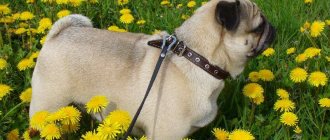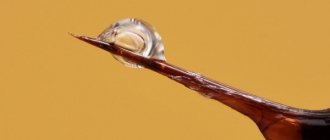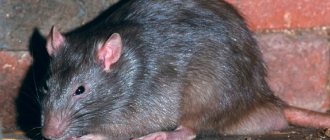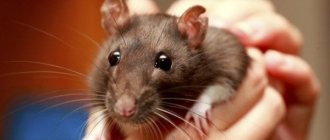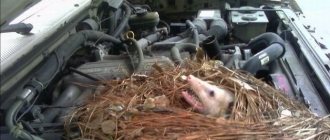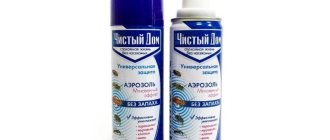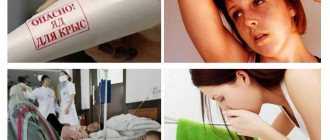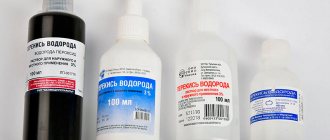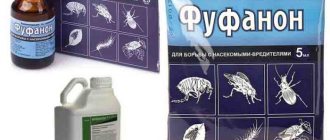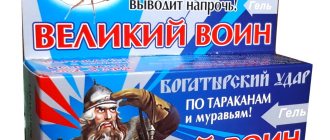Krysid instructions
1.1 The “RATSID” product (hereinafter referred to as the product) is a ready-to-use gray poisoned grain bait based on purified grain or cereals, containing 1-(1-Naphthyl)-2-thiourea as an active substance (AI) - (ratside) in an amount of 1.0%, administered as part of a rodenticide con.
1.2 The product is intended for the fight against gray and black rats by professional contingent in the practice of medical deratization and the population at home.
1.3 The toxic characteristics of the product are determined by the properties of the DV, which is a fine, easily dusty crystalline powder from gray-blue to gray-green color, according to the degree of acute toxicity it belongs to class I of extremely dangerous substances according to GOST 12.1.007: DL50 value for intragastric administration white rats 14.1+ 4.4 mg/kg, when applied to the skin of rats DL50 < 50 mg/kg. The action is characterized by hemodynamic disturbances, pulmonary edema, asphyxia, convulsions, and anuria. The action of the substance manifests selective species sensitivity: if in terms of acute toxicity for rats, DV belongs to class 1 of extremely dangerous substances, then for other species of mammals it belongs to classes II-III of highly and moderately dangerous substances. Cumulative properties are weakly expressed. Has a skin-resorptive effect. No sensitization effect was detected. OBUV DV in the air of the working area is 0.05 mg/m3, aerosol. The agent for acute toxicity when administered into the stomach belongs to class III of moderately hazardous substances in accordance with GOST 12.1.007 (DL50 is 1300 mg/kg when administered into the stomach of rats), has a weak cumulative effect, Kcum >1. There is a lack of skin-resorptive and local irritant effects.
1.4 When testing biological effectiveness carried out on a test object - gray rats, their death within 2 days was 70%. The ingestibility of bait, on average, amounted to 17.5% of the daily diet of rats.
1.5 The product is used in foci of natural focal infections, in built-up and unbuilt-up parts of settlements, including residential premises, food, children's (in the absence of children) and medical facilities.
1.7 Packaging: in four-layer paper bags to ensure the safety of the products. The net weight of the product in a bag is from 10 to 30 kg.
Types and effects of poisons
Rodenticide
Rodenticide is a rat poison, a type of pesticide, designed to kill rats and mice. Rodenticide is divided into several types, each of which differs in its effect on rodents and the human body:
- The combination of arsenic with lead, white, yellow phosphorus, thallium sulfide - belongs to the poisons of the previous generation, are prohibited in our time due to their high toxicity.
- Krysid - the drug has restrictions for use due to its high level of toxicity. Rasid is used under strict control and only in those places where other drugs have been unsuccessful. The death of rodents after eating the bait occurs after 2 hours.
- Zookoumarin is an active substance contained in almost all readily available poisons against rodents. After eating it, blood clotting is impaired, so the death of the animal occurs due to internal bleeding.
- Ratindane, Ethylphenacin, Izoindan are 1st generation anticoagulants. Poisons of this group have a delayed effect; once inside a rodent, they do not accumulate and are quickly eliminated from its body. Some types of rats have become immune to such toxic substances. For this reason, more effective 2nd generation anticoagulants have been created (Brodifacum, Flocumafen, Bromadiolone, Difenacoum). The products have an accumulation effect, are fast-acting and more toxic.
We invite you to read: What is the name of the big bumblebee?
Krysid method of application
2.1. Before using the product, preliminary complementary feeding should be carried out for 3 to 6 days. To do this, unpoisoned bait is laid out in special containers or on substrates. Containers are placed in rodent habitats (near burrows, in feeding areas, among shelters, on travel routes, along walls). This allows you to determine the best places to eat and attract rodents to the places where the bait is laid out.
2.2. After the specified period, in places most frequented by rodents, replace the non-poisoned food with the product. 3 2.3. To exterminate rats, 50-100 g of bait are placed at each point. The bait is left for 3-4 days.
2.4. At the end of the work cycle, collect the remains of the bait, substrate and rodent corpses for subsequent burning or burial.
Rasid precautions
3.1 Persons at least 18 years of age who do not have medical contraindications for working with toxic substances are allowed to work with the product.
3.2 Places for storing and using the product must be inaccessible to children and pets and located separately from food, water, and fodder supplies. Do not use the product in areas where food is cut and stored and near open water bodies.
3.3 During work, you must strictly observe the rules of personal hygiene, do not smoke, drink or eat. During breaks and at the end of work, be sure to take off your overalls and wash your hands thoroughly with warm water and soap. Workwear is rendered harmless by soaking in a soap-soda solution (25 g of soap and 50 g of soda ash per 1 liter of water) for 5-6 hours, followed by washing. The dishes and containers in which the product was stored, transported or laid out are prohibited from being used for any other purposes.
3.4 The product should be stored in undamaged containers in a special locked cabinet (safe). During storage and transportation, the packaging must be tightly closed and have a container label. Do not keep the product near odorous chemicals.
3.6 The product is laid out using rubber gloves or using devices that prevent contact of unprotected skin with the product (spoon, tongs, etc.). Do the same when collecting leftover product and rodent corpses.
3.7 Store and place the product in places inaccessible to children and pets (including birds), separately from food, fodder and water.
3.8 People living or working at treated sites must be notified of the availability of the product and the need to take precautions.
3.9 Ensure that bait is not accessible to non-target species. Do not place near bodies of water.
3.10 When processing children's, medical and food objects, special precautions must be taken:
Place the product and leave it in areas inaccessible to children or in the absence of children!
Place the product in special containers (containers) accessible only to rodents, which prevent the spread of poison by rodents and its contact with food products.
Upon completion of work, ensure thorough cleaning of the premises.
3.11 Residues of the product that are unsuitable for reuse, packaging, rodent corpses are burned or buried in the ground (to a depth of at least 0.5 m), in places specially designated for this.
Homemade remedies
Rat poisons are zoocides from the group of rodenticides and are intended to kill mice and other rodents. The poisonous effect is provided by the chemical base of the product. Rat and mouse repellents fall into two main categories: acute and chronic. All drugs are effective.
Acute rodent repellents are fast-acting drugs that destroy pests immediately upon first entry into the body. The disadvantage of this type of rat poison is the fact that the animal quickly recognizes the danger and stops taking the bait. In addition, these drugs are extremely dangerous for humans and pets.
Chronic rat poison has a delayed effect, i.e. the toxic ingredient gradually accumulates in the rodent’s body, and therefore their subsequent death is not associated by other rodents with a specific bait. As a result, the rats continue to consume the poisoned product, which ultimately leads to the destruction of the entire family.
Choosing the most effective anti-rodent product from a wide range is quite difficult. The following types of rat poison can be mentioned:
- Krysid. It comes in powder form and has gained popularity. The principle of its action is based on disruption of the blood circulation of rodents. The death of the rat occurs after approximately 11-13 hours. The drug is practically harmless to pets. It can be mixed with bread, porridge, grains, seeds and other baits. To prevent animals from becoming accustomed to this chemical, it is recommended to use it no more than once every 2.5-3 months.
- Goliath. This remedy acts quickly enough, but the death of the animal occurs only after a few days, because the drug interferes with respiratory functions.
- Mortorat. This product includes brodifacoum, which provides a mummifying effect. The most common form of sale is briquettes for rat traps.
- Rat death. This drug belongs to the category of anticoagulants. Rodents die after about 5-7 days.
- Nutcracker. Available in a jelly-like consistency. It is formed in the form of balls, which are laid out in the places where the animals most often live. This poison can be safely used indoors.
- Zookoumarin. It is an effective powdered poison against rats. Complete destruction of the entire rat family is observed 6-8 days after placing the bait. Most often the bait is prepared from bread.
A fairly effective poison can be prepared at home yourself. You can offer the following folk recipes:
- a mixture of gypsum and corn flour in equal proportions, which is diluted in milk (150-250 ml) to the desired consistency;
- a mixture of flour, baking soda (128-132 g each) and sugar (190-210 g), and when laying it out, it should be placed in a shallow container to preserve the gas released, which is most lethal for rodents;
- a mixture of gypsum (200 g) and mashed potato powder (100 g) with the addition of cinnamon in water (250-300 ml).
Rat poison is a potent, effective remedy in the fight against various rodents. When using such pesticides, it is important to take precautions to prevent poisoning of people and pets. Modern compositions can be safely used inside residential premises, because they are practically harmless.
Krysid first aid for accidental poisoning
4.1 If the product enters the human body, poisoning is possible, the signs of which are: general weakness, rapid breathing, headache, nausea, vomiting.
4.2 The victim should be immediately removed from contact with the product and urgent measures should be taken to remove the poison from the body.
4.3 If the product accidentally enters the stomach, the victim should immediately drink several glasses of water or a pink solution of potassium permanganate (1:5000, 1:10000) and then induce vomiting. Repeat the procedure 2-3 times. After removing the drug, rinse the stomach with a 2% solution of baking soda (1 teaspoon per glass of water) or a suspension of activated carbon, chalk, magnesium sulfate (1-2 tablespoons per liter of water) or just warm water. 10-15 minutes after gastric lavage, the victim needs to drink a TUM mixture (1 part tannin, 2 parts activated carbon, 1 part magnesium sulfate) - 2-3 tablespoons per 2 glasses of water. After 5-10 minutes, you need to take magnesium sulfate or another saline laxative. After all procedures, give the victim strong sweet tea with ascorbic acid. If the product gets into your eyes, it is recommended to rinse them generously with water or a 2% solution of baking soda, then drip 1-2 drops of a 30% solution of sodium sulfacyl (albucid). If the product gets on the skin, it is recommended to remove it with a dry cotton swab from the affected areas, without rubbing or smearing, and wash them thoroughly with warm water and soap.
4.4 If the victim’s health worsens, you should seek medical help.
Causes of poisoning
It is difficult to take a large dose of poison internally without noticing it. But if they belong to obsolete species, then the possibility of poisoning increases.
According to statistics, no fatal poisonings have been recorded in the Russian Federation over the past 10 years. But still, cases of poisoning with mouse poison have been repeatedly reported.
The most common causes of poisoning are:
- Ingestion of poisons into the body through food - after penetration, the toxic substance is absorbed into the gastrointestinal tract and spreads throughout the human body through the bloodstream. People living in pest control areas are susceptible to poisoning. Cases of intoxication in children are very common.
- Inhalation of poisonous particles is poisoning through the lungs.
- Unhealed wounds and lesions on the skin are open gates for poison to enter the body.
Symptoms
When eliminating pests with rat poison, you should be prepared for the possibility of the poison entering the human body. Therefore, you need to know the symptoms of rat poisoning in advance and, at their first manifestations, seek help from specialists.
Headache
Signs of mouse poison intoxication include:
- Acute headache is the main symptom of poisoning with substances containing chemicals. In this case, analgesics relieve pain only for a while.
- Bleeding - due to deterioration of blood clotting, nasal hemorrhages, intracavitary hemorrhages, and the appearance of blood clots during urination are likely. When blood is lost, severe dizziness occurs.
- General malaise - any intoxication of the body is accompanied by weakness, body aches, refusal to eat, drowsiness, apathy and inhibited reaction.
- Impaired vision and hearing - depending on the degree of intoxication, hearing and vision impairments are possible.
- Disruption of the gastrointestinal tract - when toxic substances enter the gastrointestinal tract, symptoms of intoxication in a person are frequent vomiting, diarrhea with mucus or blood clots.
Having noticed the first signs of rat poisoning, you should contact a medical facility to prescribe an antidote.
